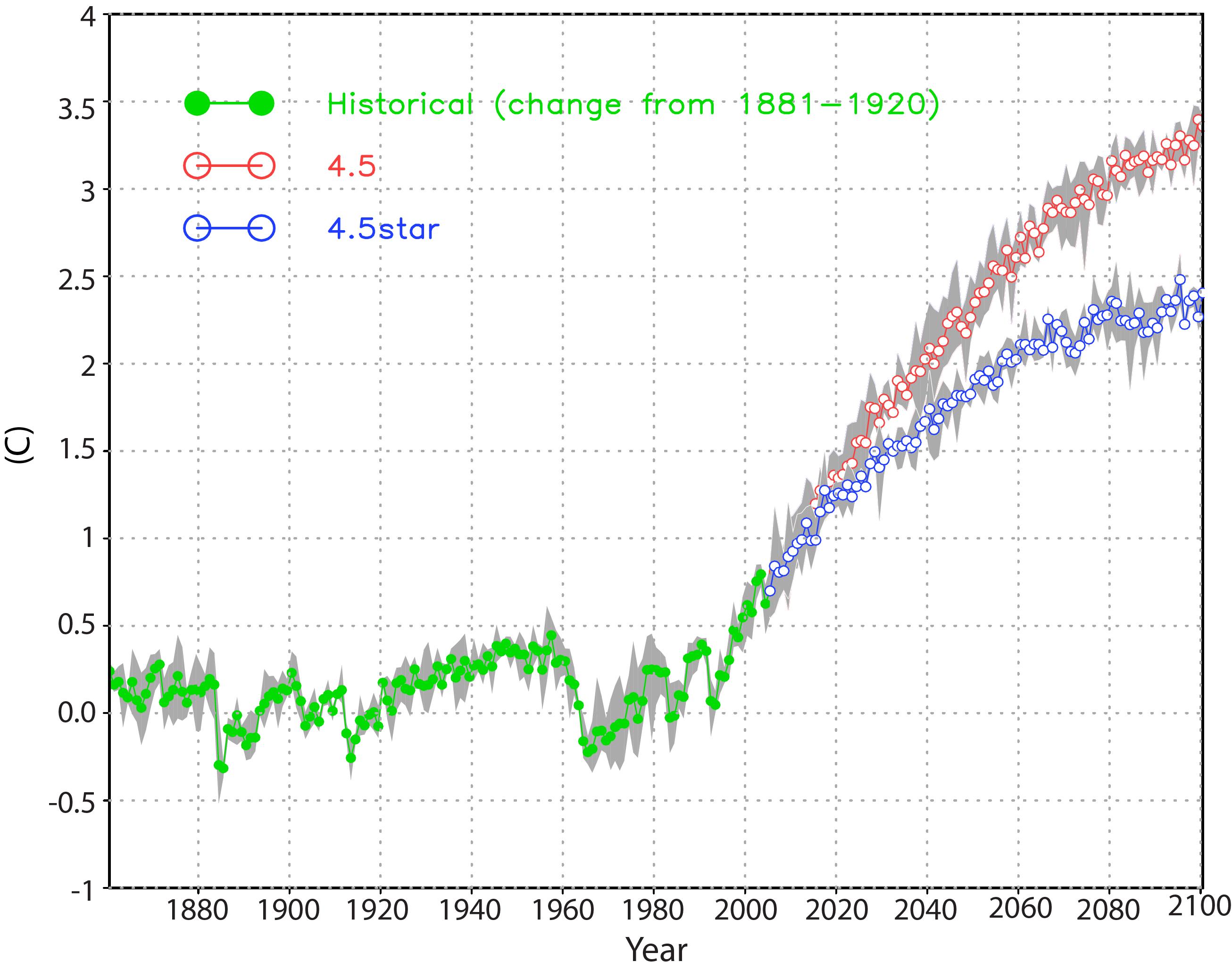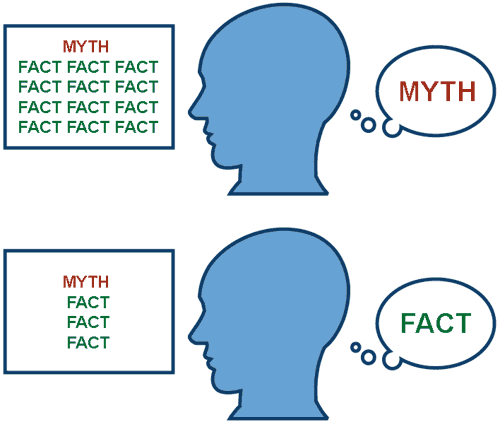
I was fortunate to be able to attend the American Geophysical Union (AGU) Fall Meeting in San Francisco for the first time this year, albeit just for the first day. It's a very impressive event, with over 20,000 attendees, from what I heard. Although the AGU includes a wide range of scientific fields, a large fraction of those are climate-related.
There were some small talks on Sunday in a nearby hotel before the conference officially began, including one by John Cook, but unfortunately those were booked up quickly before I was able to sign up. But after his talk was over, I was able to meet John in person for the first time, as well as SkS' Tom Smerling. This being John's first trip to San Francisco (and North America, and the Northern Hemisphere, and outside of Australia - climate bloggers don't get out of their dungeons very often), I took him out to a spot overlooking the Golden Gate Bridge Sunday night for a bit of touristy fun.
Monday morning was mainly devoted to a massive poster session. There were literally thousands of posters on the wide variety of topics included in the AGU, ranging from Atmospheric Science to Volcanology. Despite sticking mainly to the climate-related subjects (Atmospheric Science, Global Environmental Change, and Paleoclimate), it was a bit of information overload. It was a very informative and interesting session though. One poster in particular caught my attention - Levy et al.'s The Future Impact of Aerosols on Climate Change.
Levy et al. examined the effects of projected human aerosol emissions changes over the 21st Century in the IPCC Fifth Assessment Report (AR5) new emissions scenarios on modeled global temperature and precipitation changes. They compared an IPCC AR5 mid-range emissions scenario (RCP4.5) to a scenario in which human aerosol emissions are held constant at 2005 levels (which they call 4.5star). Their main conclusion:
"Projected RCP4.5 aerosol emission reductions result in 1°C additional global warming and 0.1 mm/day additional global precipitation by the end of the 21st century."

It's a rather concerning result that reduced aerosol emissions - which will inevitably result as countries like China continue to take steps towards clean air, and as we transition away from our reliance on fossil fuels - will result in additional warming and precipitation. This is Hansen's "Faustian Bargain."
After the morning poster session, I attended two oral sessions Monday afternoon. The first was called Effectively Communicating Climate Science.
The first presenter was Susan Hassol, who discussed study results showing that people are less likely to accept scientific evidence if it's presented in a pessimistic (i.e. we're headed towards catastrophic climate change) as opposed to an optimistic (i.e. we can achieve the necessary emissions cuts, and we've already taken some steps in the right direction) fashion. While it's important to discuss the science and the threat it poses, people are more likely to accept that evidence and threat if they know there's something they can do about it.
While climate change poses an urgent threat, it also poses an opportunity with major potential benefits (i.e. cleaner air, domestic security, energy independence, job creation, etc.). If we present the issue as a challenge we need to rise to as opposed to a catastrophic path we're on, people are more likely to accept the scientific evidence. This is a very important message, because it's very easy to focus on the dire consequences of business as usual (I know I often do), but this sort of message can actually prevent people from absorbing the scientific evidence if not also tempered with the fact that climate change is a solveable problem, and the solutions have a number of major benefits. Overall Susan's presentation was excellent and very informative.
John Cook spoke second, and did SkS proud with a very good presentation. He focused on the immensely-popular Debunking Handbook and how we can accidentally reinforce myths in peoples' minds if we don't watch out for the various backfire effects, such as The Overkill Backfire Effect (a.k.a. the less you say, the more the audience hears):

Read the handbook if you haven't already - it's a great succinct summary of how to effectively debunk any type of myth.
Ed Maibach of George Mason's Center for Climate Change Communication spoke third. He discussed study and survey results finding that those Republicans who accept climate science do so for two main reasons - they realize that there is a scientific consensus, and they trust the scientific experts. Unfortunately, a large fraction of Americans are unaware of the consensus - they believe climate scientists are divided on the issue. Ed's main point was that the most effective form of communication involves simple, clear messages, repeated often by a variety of trusted sources. Thus climate scientists need to become both trusted, and find ways to clearly and simply communicate basic climate science to the public (and to other various leaders who can communicate the science to the public). Ed recommended that climate scientist and other communicators to the public repeat five main points:
John Reisman was the final speaker on this panel. He focused on the fact that Republicans tend to reject climate science because they oppose the solutions, so we need to make the point that mitigating climate change will have less impact on the economy than adaption.
John Abraham spoke in the following session called Shapers of the Debate: What Happens to Science in the Hands of Stakeholders, and made many of the same points as the presenters in the previous session. In order to be effective communicators, climate scientists need to be trusted. While advocating for climate solutions is important, climate scientists must distinguish between when they are speaking about science, and when they are advocating. As Abraham put it, climate scientists must "wear two hats" and be very clear when they are wearing each, so that advocating for solutions does not detract from their scientific expertise. Abraham presented what he believes are the four key points to communicate to the public:
Many of those who oppose climate solutions (and thus reject climate science) only look at the costs of action while ignoring the costs of inaction. If we can convince them that climate solutions will have less impact than inaction (which is true), they will be more likely to accept climate science.
After these excellent and informative presentations, a number of us attended a gathering hosted by SkS's own Rob Honeycutt. The attendees included:
The shindig was great fun and probably the highlight of my trip. All attendees were great and brilliant people. Another hour or two and we probably would have had all the world's problems solved. Alas, the hour grew late and we had to call it a night.
For all who missed the conference, I highly recommend trying to attend next year. I'll certainly try to do better than just one day myself. It was very informative, interesting, and fun, and we will undoubtedly repeat the SkS shindig next year.
Posted by dana1981 on Thursday, 8 December, 2011
 |
The Skeptical Science website by Skeptical Science is licensed under a Creative Commons Attribution 3.0 Unported License. |